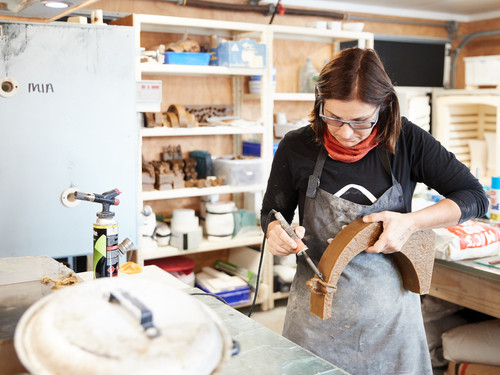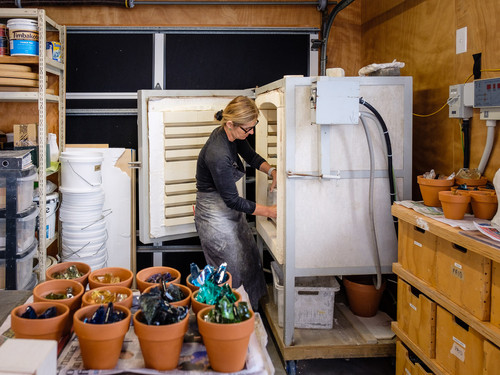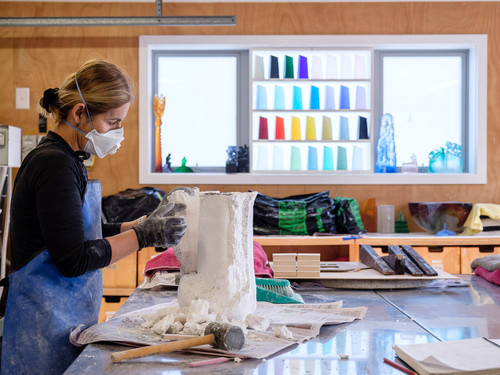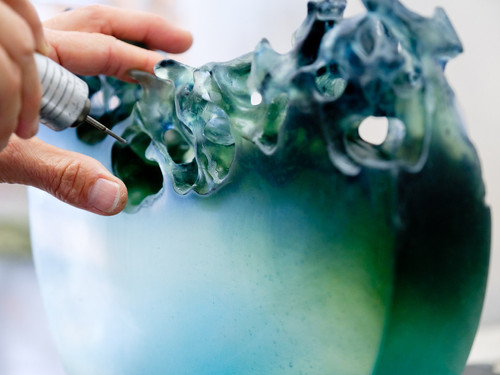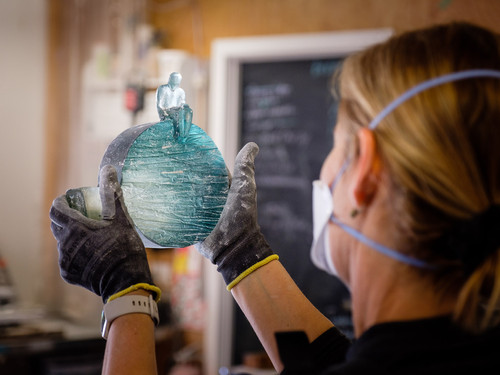Glass Casting
The Process of Casting Glass
What I enjoy most about glass casting is the variety of tasks and skills required to finish a piece. Drawing, sculpting, mathematics, a steady hand, and a complete thought process are needed to craft a piece.
Di uses the lost wax method to create her bespoke cast glass artworks. Here is her complete process:
Create a wax model
Hand-build a kiln mould from plaster and silica around the wax model
Steam the wax from the kiln mould
Weigh and clean the lead crystal and pack into a terracotta pot
Place the mould in the kiln with the terracotta pot positioned above it
Set the kiln controller to desired firing schedule, a minimum of one week
Unpack the kiln and discard the terracotta pot
Remove the mould from the freshly cast glass
Cut the base off the glass with a diamond saw
Grind the base by hand-lapping with four varying grades of grit
Soak glass in polish dip for 8 hours
Polish flat areas, base or sides, with cerium oxide
Engrave signature and artwork code on the base
Photograph and catalogue the finished cast glass artwork
The casting process is refined to suit each artwork. From artworks produced in production quantities to unique commissions, each artwork requires vast knowledge and technical skill.
Photography by Adrian Malloch, Mark Hamilton, and Di Tocker




